Various industries need heavy-lifting machines, with the most significant example being the construction industry. In this field, crane and boom trucks have cemented their place as one of the most convenient and popular heavy-lifting solutions.
At first glance, these two trucks may seem interchangeable, but they possess distinctive characteristics that set them apart and make them suitable for certain applications.
This article will explore the top differences between boom and crane trucks so that buyers will be well placed to purchase the right option for their client’s needs.
Table of Contents
What are boom trucks?
What are crane trucks?
Five significant differences between boom and crane trucks
Boom vs. crane trucks: which is better for heavy loads?
The bottom line
What are boom trucks?
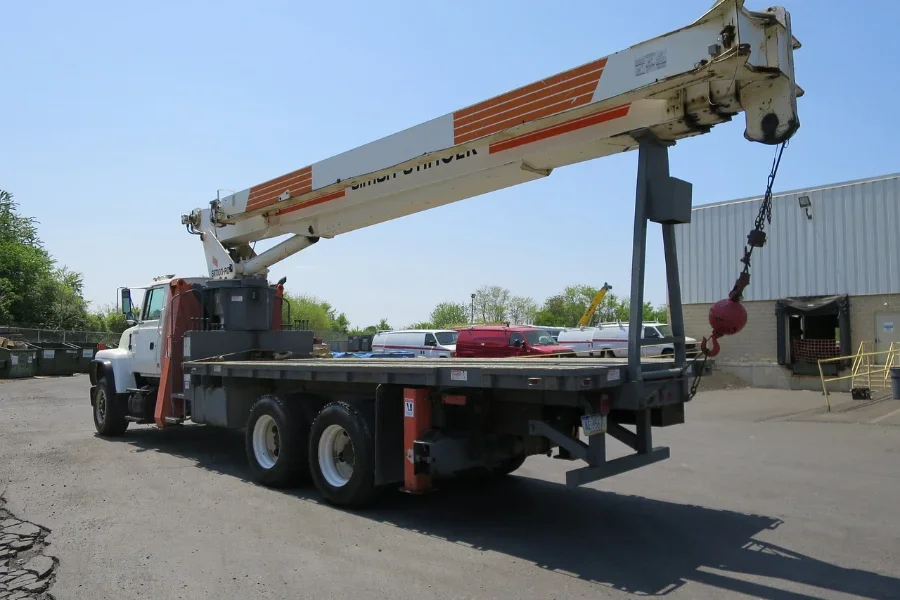
Boom trucks are purpose-built vehicles featuring an extendable boom and hydraulic lifting mechanism. They are widespread in construction, utility maintenance, and other industries where workers must reach elevated areas.
Additionally, the boom (usually mounted on the truck’s chassis) is easy to maneuver and extend to access heights that are impossible to reach through conventional means.
Typically, boom trucks have a bucket or a platform at the end of the boom, providing a stable and secure workspace. It can rotate horizontally, allowing operations to reach various positions without moving the entire truck.
A boom truck’s operation is simple and involves the following steps:
- First, the operator positions the truck at the desired location, ensuring a stable surface.
- Then, the operator deploys the outriggers (extendable support located at the truck’s corners) to enhance stability and prevent tipping.
- Next, the operator will extend, retract, raise, and lower the boom to reach the desired height and position.
Boom trucks have various safety features, like emergency stop buttons, load-sensing systems, and stability monitoring mechanisms. Boom truck operators also require specialized training to safely and effectively operate them, as they involve working at heights and handling heavy loads.
What jobs are boom trucks suitable for?
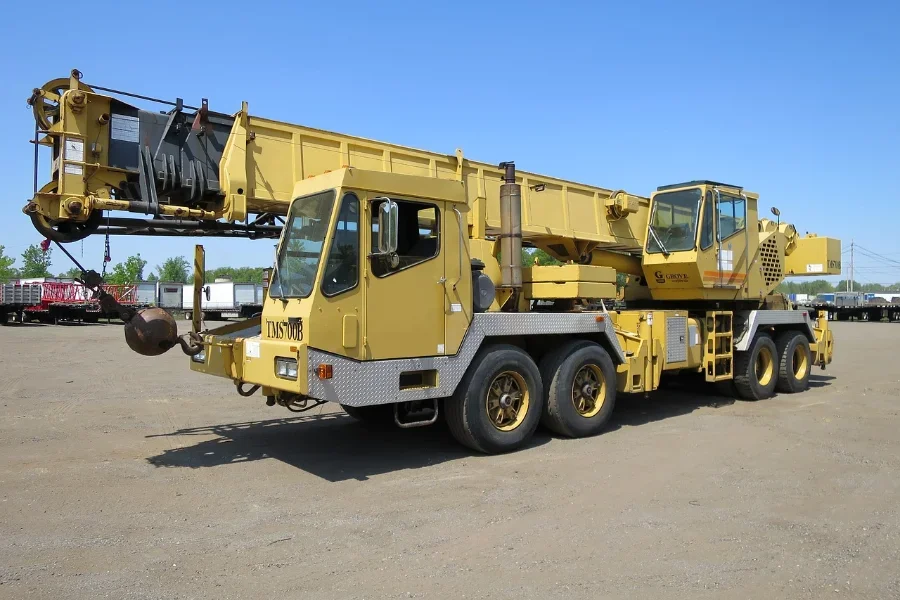
Boom trucks are incredibly versatile, and they can handle any of the following applications:
- Utility maintenance and repairs: Utility companies often use boom trucks to perform tasks like repairing electrical lines, installing/maintaining streetlights, and trimming trees near power lines.
- Construction projects: Boom trucks are valuable in construction sites for lifting/placing heavy materials and accessing elevated areas for construction or maintenance work.
- Telecommunications: Boom trucks also work for installing and maintaining communication infrastructure, like placing antennas, running cables, and accessing tall towers.
- Window cleaning: Boom trucks with specialized platforms or baskets can handle high-rise window cleaning, providing safe and efficient access to windows at significant heights.
- Film and television production: Filmmakers use boom trucks to position cameras, lighting equipment, and props at elevated positions, allowing them to capture dynamic shots and create unique perspectives.
- Municipal services: Municipal authorities also use boom trucks for tasks like pruning trees, hanging banners or flags, and conducting infrastructure inspections, like bridges and streetlights.
- Signage and billboard installation: Boom trucks can facilitate large signs/billboard installation, repair, and maintenance, providing a stable and secure platform at elevated heights.
- Emergency services: Fire departments or emergency response teams can deploy boom trucks to perform aerial rescues or gain access to challenging locations during emergencies.
What are crane trucks?
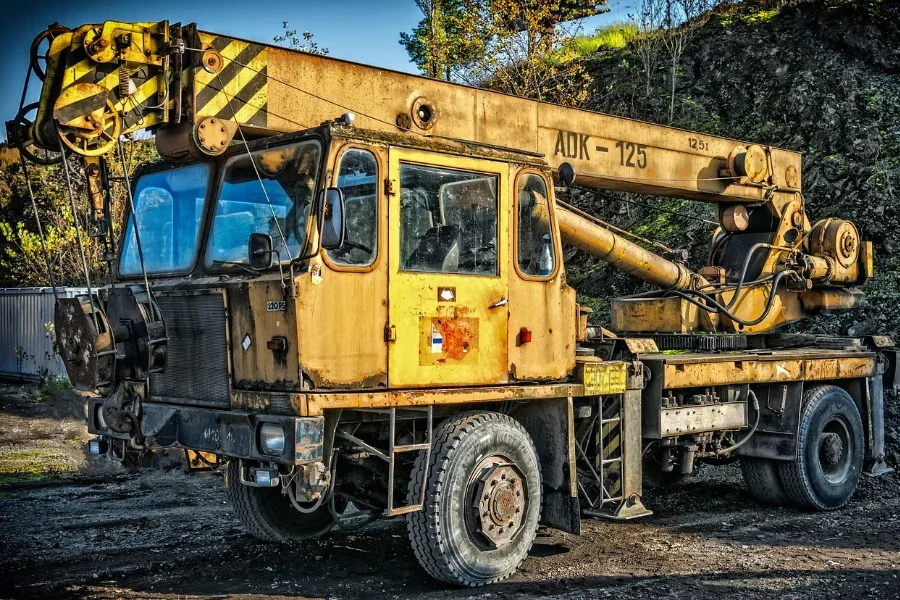
Crane trucks are also specialized vehicles. However, they feature a crane that can lift and move heavy loads. No doubt, they offer the best of two worlds: a truck’s versatility/mobility and a crane’s lifting capabilities.
Crane trucks are staple machines in construction, transportation, and other industries that require lifting, transporting, and placing heavy loads in different locations.
In addition, the crane often consists of a telescopic or lattice boom mounted on the truck’s chassis. Users can extend or retract the hydraulically operated boom to reach different heights and distances.
However, the crane truck’s lifting capacity depends on factors like boom length, operation angle, and the load’s weight distribution.
Overall, crane trucks work similarly to the boom truck. Although it involves several components and processes, the basic working principle is not different:
- First, the operator positions the crane at the desired location while considering the terrain and ground conditions.
- Then, they’ll launch the extendable support to provide additional stability and prevent tipping during lifting operations.
But in lifting is where some differences start to show. Since it’s operated hydraulically, operators have more control over lifting, lowering, and positioning heavy loads. Depending on the specific model, the crane may feature additional functionalities, like rotating the boom horizontally, extending the boom with a job attachment, or utilizing specialized attachments for particular tasks.
Crane trucks also have a set of safety features. They come equipped with load monitoring systems, stabilizers, and safety devices to prevent overloading or tipping. Like their boom counterparts, crane truck operators also require specialized training and certification to operate these vehicles.
What jobs are crane trucks suitable for?
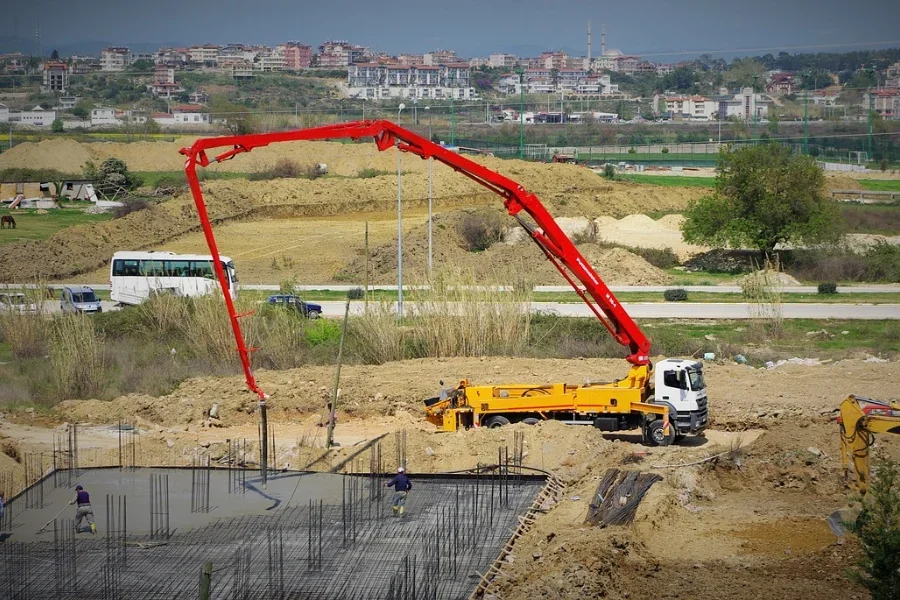
Crane trucks are suitable for various applications, including:
- Construction projects: Crane trucks are standard in construction sites. Operators use them for lifting/placing heavy materials, like steel beams, precast concrete panels, and other equipment.
- Infrastructure development: They are also utilized for tasks like erecting/dismantling tower cranes, placing concrete structures, and installing large pipes and utility equipment.
- Shipping and logistics: Crane trucks can easily handle the loading and unloading of heavy cargo from trucks, ships, and trains, facilitating efficient transportation and logistics operations.
- Utility maintenance: Utility companies use crane trucks to install or repair power poles, transformers, and overhead lines, as well as for maintenance tasks on telecommunication infrastructure.
- Tree care and removal: The arboriculture industry uses crane trucks for tree removal, pruning, and transplanting large trees, particularly in urban environments with limited access.
- Recovery and towing services: Crane trucks with specialized attachments can recover and tow vehicles, especially in overturned or stuck positions.
- Film and event production: The entertainment industry utilizes crane trucks to lift and position lighting equipment, camera booms, and other heavy props for film shoots or event setups.
- Disaster response: Crane trucks are vital in debris removal, structural stabilization, and rescue and recovery operations.
- Mining and heavy industry: Crane trucks are widespread in mining operations and heavy industrial settings for lifting/moving heavy machinery, materials, or components.
Five significant differences between boom and crane trucks
Design and operation
Boom trucks feature a hydraulic boom that extends outward, typically telescoping or articulating. It can rotate 360 degrees, allowing for versatile lifting and positioning capabilities. Boom trucks also have designs for lifting and moving loads horizontally and vertically within a limited radius.
On the other hand, crane trucks come with a telescopic or articulated crane mounted on the truck chassis. It can extend vertically to lift heavy objects and has greater reach than boom trucks. Crane trucks also offer more precise control over lifting and placing loads.
Lifting capacity
Generally, boom trucks have a smaller lifting capacity than crane trucks. They are suitable for lighter loads and tasks requiring maneuverability within a limited radius. Depending on the model, its lifting capacities range from a few tons to around 50 tons.
In contrast, crane trucks are designed for heavy lifting operations and have higher lifting capacities. They can handle larger loads, ranging from one to over 100 tons. However, the lifting capacity depends on the crane’s size and configuration.
Reach and height
A boom truck’s reach and height depend on its boom length and configuration. While it can extend horizontally and vertically to a certain extent, its reach and height are more limited than crane trucks.
Contrarily, crane trucks offer greater reach and height capabilities. The telescopic or articulated boom allows lifting loads to higher elevations and longer distances.
Versatility and attachments
Operators can equip boom trucks with various attachments at the boom’s end. These attachments can include buckets, winches, drills, or other specialized tools. As a result, boom trucks are versatile enough to perform various tasks.
While crane trucks are primarily for lifting operations, they have limited versatility regarding attachments. Although the focus is on the crane, operators can equip some crane trucks with additional accessories like jibs or man baskets to expand their functionality.
Stability and support
Boom trucks feature outriggers or stabilizers that provide extra stability during lifting operations. Similarly, crane trucks also have outriggers for extra stability while lifting heavy loads.
Both trucks provide excellent support, ensuring a safe and secure lifting operation while preventing tipping.
Boom vs. crane trucks: which is better for heavy loads?
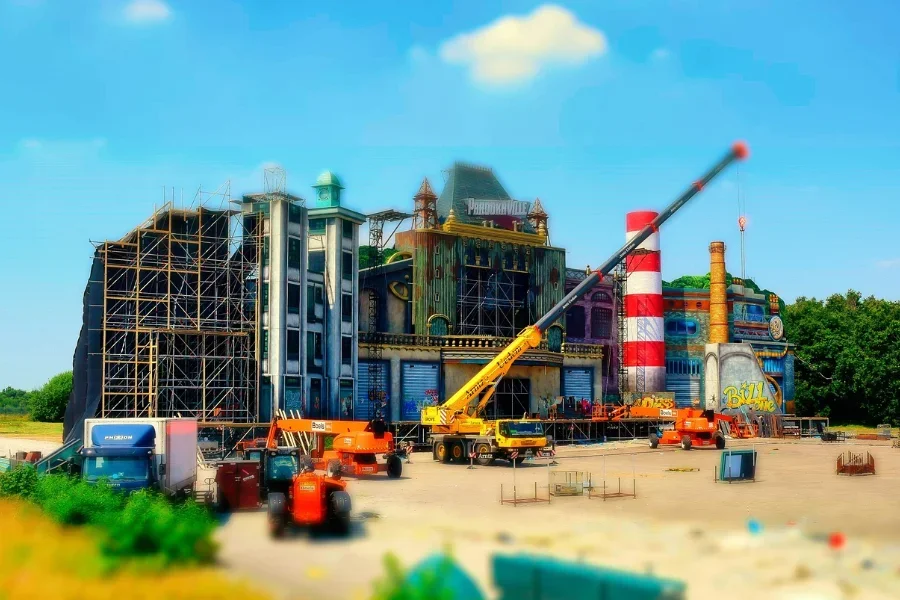
Regarding heavy loads, crane trucks generally have an advantage over boom trucks. They are specifically designed for lifting and moving heavy objects and feature robust hydraulic systems that provide substantial lifting capacities.
While boom trucks are perfect for reaching moderate heights and distances, crane trucks are the go-to for lifting heavy objects to significant heights or long reaches.
The bottom line
Boom and crane trucks are similar but they do have some key features that set them apart. While crane trucks feature powerful hydraulic systems and robust crane mechanisms with high lifting capacities, boom trucks offer versatility and maneuverability beyond heavy lifting.
Choosing between boom trucks and crane trucks depends on the specific operational requirements, budget constraints, and task nature. Hence, businesses must assess the lifting capacity, stability, reach, flexibility, and maneuverability to determine the most suitable option for their intended application.



